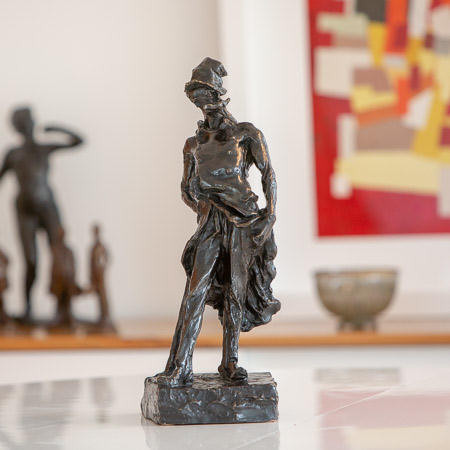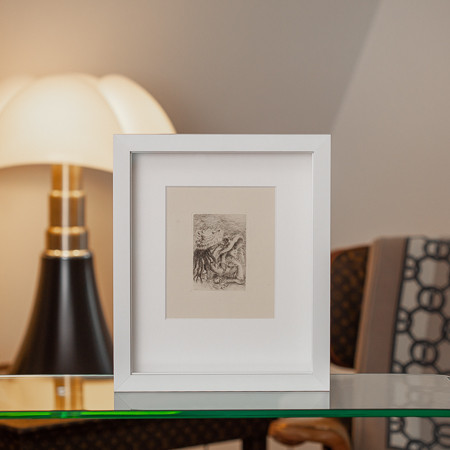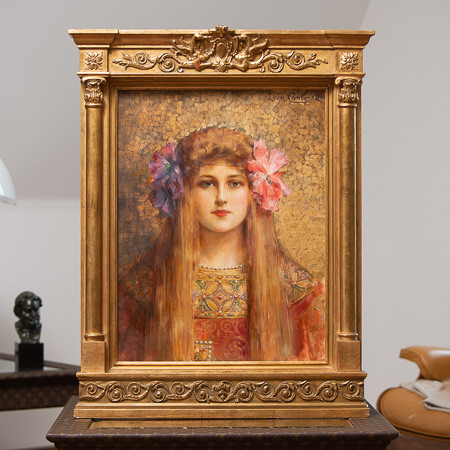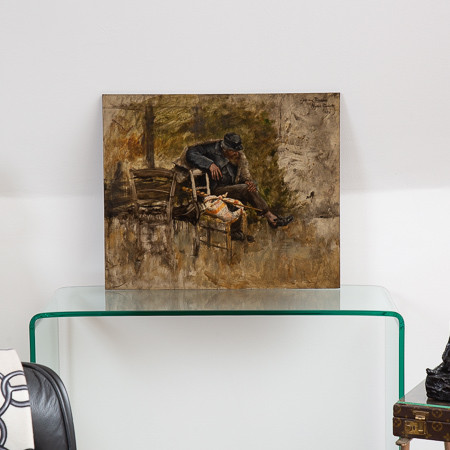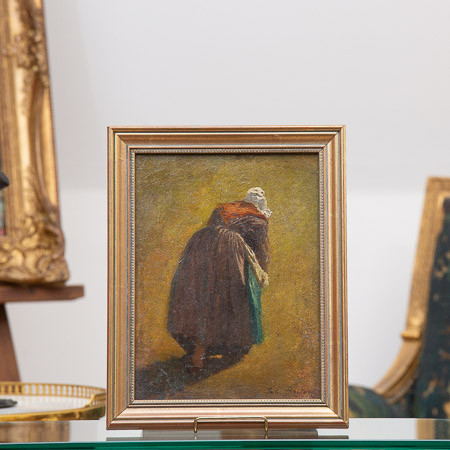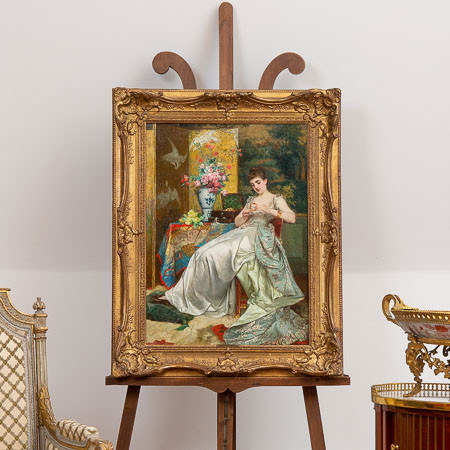About
«Young girl», oil on canvas by Romain Cazes, signed lower right «R. Cazes» and dated 1839.
While portrait photography developed, mainly thanks to the invention of the daguerreotype by the painter and photographer Louis Daguerre in 1839, commissions for painting portraits did not diminish. Having your portrait painted was firstly a real sign of social success. Large format canvases were paraded in vestibules and lounges of beautiful bourgeois residences in full view of visitors. It is in this context that Romain Cazes (Saint-Béat, 1803 - Saint-Gaudens, 1881) developed in his artistic career as a painter of history. After his initial training in the studio of the Toulouse painter Joseph Roques, he became a student of the neoclassical and orientalist Jean Auguste Dominique Ingres in 1829. He then received several orders, in particular for religious decorations for churches in the South-West.
The bust portrait of Young Girl executed in 1839 by Romain Cazes is imbued with a certain dignity sought after in portraits from this period. The young girl, three-quarter-oriented, is placed in the foreground in a rural landscape in relief under a blue sky with fleecy clouds. The painter represents the depth of space through an atmospheric perspective in a chromatic gradient of browns, greens and blues. Like his teacher Ingres, Romain Cazes rejects the romanticism of the scenes and adopts classic decor. The face, with a pure line, suggestive and very personal beauty, is treated in the manner of the portraits of his mentor Ingres. Very lengthened, the face is made up of three equal parts: the forehead, the nose and the part from the mouth to the chin. Painted with this ingresque precision, a pinched mouth sports the face suggesting a very serious attitude.The young girl is dressed in a light, pleated antique dress, cinched at the waist with a wide belt. The dress is topped with a deep black shawl with a wide neckline and lace edging, which emphasizes the width of her shoulders. She wears a hairstyle decorated with trendy braids. Wearing jewellery comes down to a simple sliding necklace. The whole gives a rather austere appearance to the young girl, but in the taste of the time. Fashion, which is no longer reserved only for the court, becomes an industry that also interests the bourgeoisie. This portrait, depicting an unknown woman, today constitutes one of the essential testimonies for understanding social norms at the crossroads of the Second Republic and the Second Empire.
At the end of the 1830s, the work of Romain Cazes proliferated and was marked by several female portraits such as Spring in 1837 or Young Renaissance woman with a wreath of flowers in 1839, but also by male portraits as «portrait d'homme» in 1836. If the production of the academic artist is important, most of his works have not reached us. However, the Ingres Museum in Montauban keeps some of the painter's works and several of his frescoes are visible in religious and civil institutions in the southwest, such as in Bagnères-de-Luchon, Bordeaux or even Albi, and also in Paris.
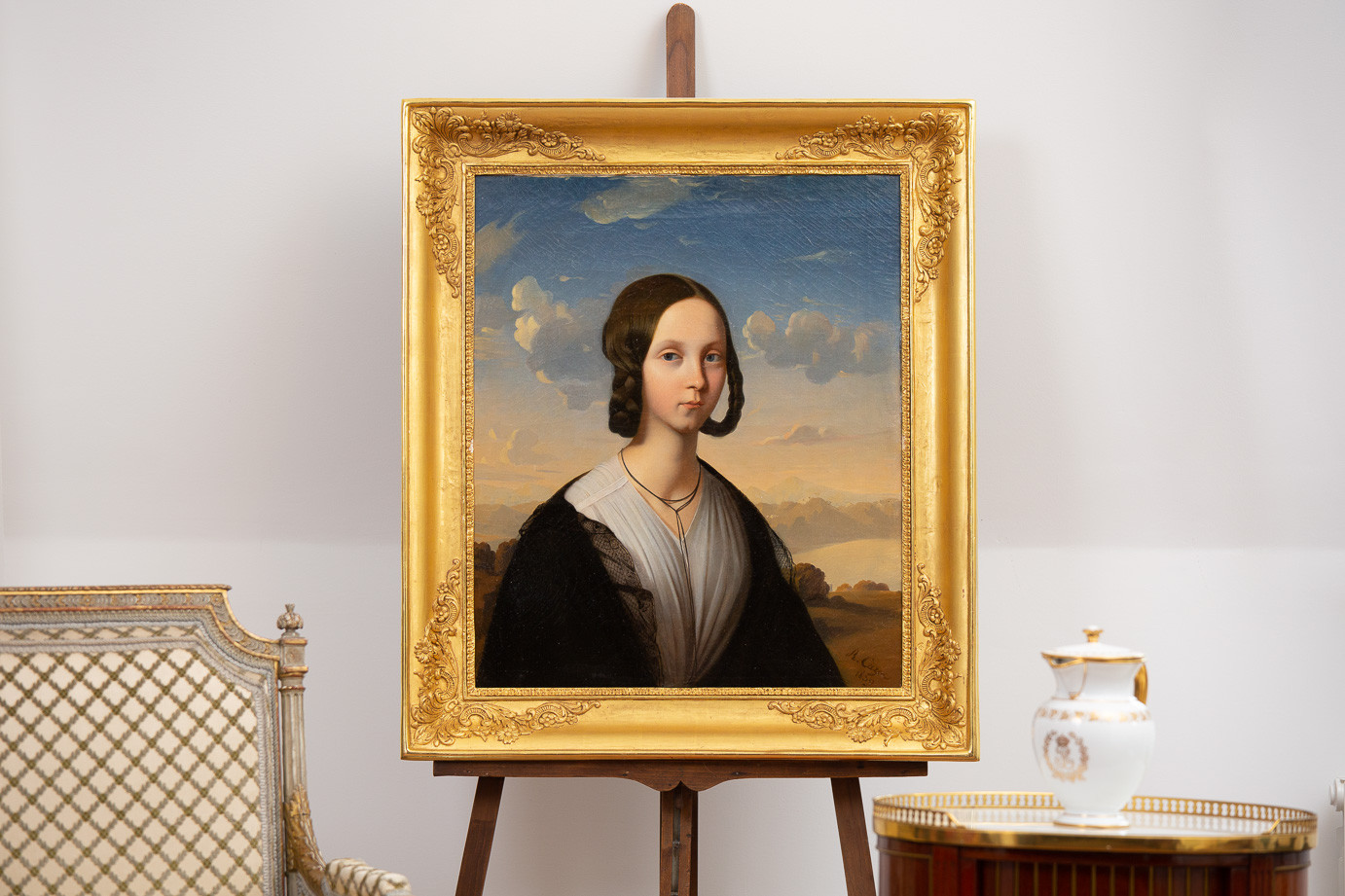
Characteristics
- Year: 1839
- Origin: France
- Artist: Romain Cazes
- Material or technique: Oil on canvas
- Sizes: 60 x 74.5 cm (Width x Height)


